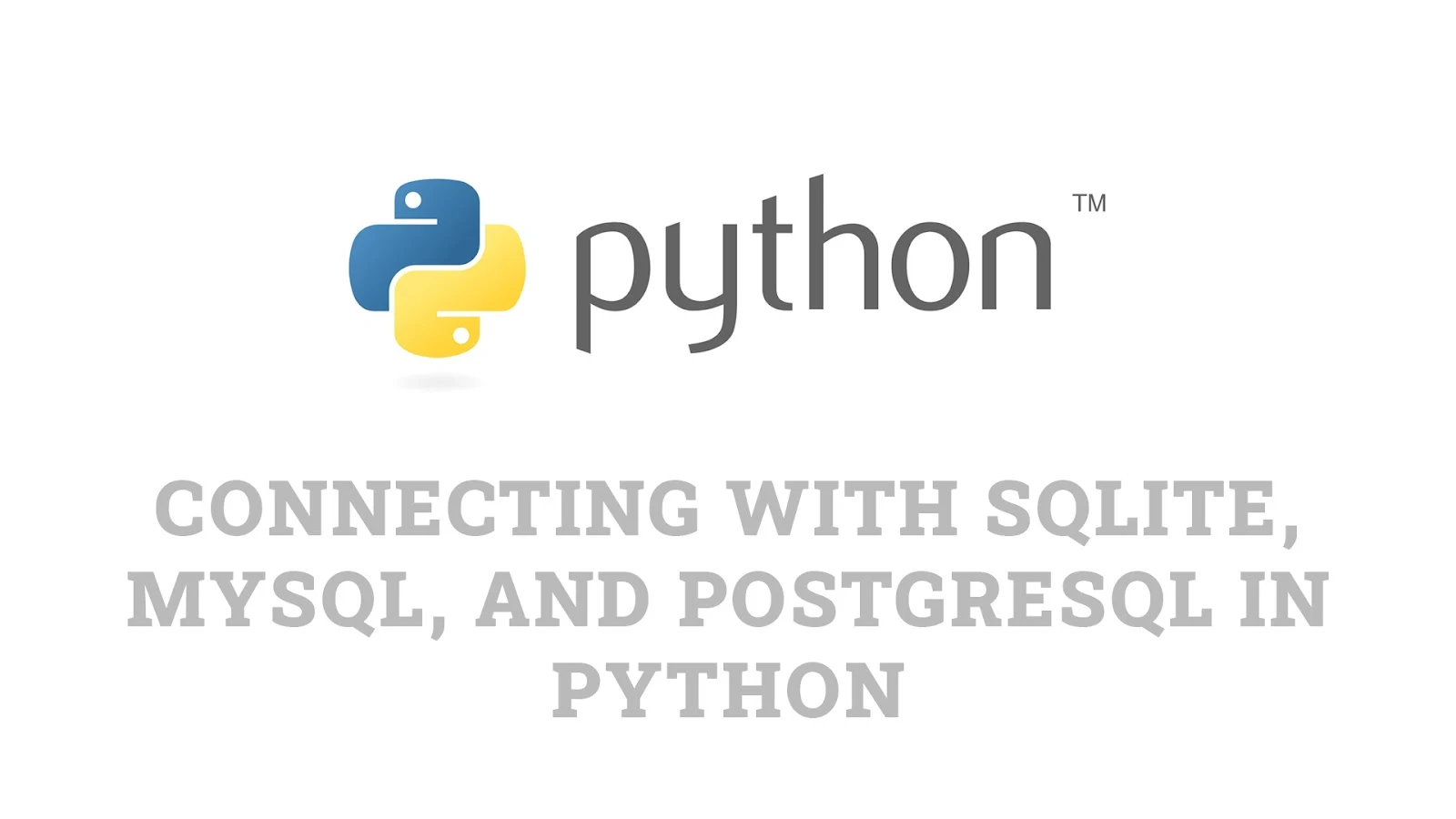Overview
Python is a versatile programming language that provides robust support for database interactions. Whether you are building a small application or a large enterprise solution, understanding how to connect Python to databases like SQLite, MySQL, and PostgreSQL is essential.
This article offers a step-by-step guide on how to connect and interact with these databases using Python, along with best practices for database management.
Connecting to SQLite in Python
SQLite is a lightweight, self-contained database engine that comes built into Python, making it an excellent choice for small to medium-sized applications.
1. Setting Up SQLite
# Import the sqlite3 module
import sqlite3
# Create a connection to an SQLite database (creates file if it doesn’t exist)
connection = sqlite3.connect("example.db")
# Create a cursor object to execute SQL commands
cursor = connection.cursor()
print("Connected to SQLite database!")
2. Performing Basic Operations
Create a table, insert data, and query records using SQLite:
# Create a table
cursor.execute("""
CREATE TABLE IF NOT EXISTS users (
id INTEGER PRIMARY KEY,
name TEXT NOT NULL,
email TEXT UNIQUE NOT NULL
)
""")
# Insert a record
cursor.execute("INSERT INTO users (name, email) VALUES ('Alice', 'alice@example.com')")
connection.commit()
# Query records
cursor.execute("SELECT * FROM users")
for row in cursor.fetchall():
print(row)
# Close the connection
connection.close()
Connecting to MySQL in Python
MySQL is a widely used relational database, known for its speed and reliability. Python provides several connectors like mysql-connector-python and PyMySQL to interact with MySQL databases.
1. Installing the MySQL Connector
# Install the MySQL connector
pip install mysql-connector-python
2. Connecting to MySQL
import mysql.connector
# Establish a connection
connection = mysql.connector.connect(
host="localhost",
user="your_username",
password="your_password",
database="your_database"
)
# Create a cursor
cursor = connection.cursor()
print("Connected to MySQL database!")
3. Basic Operations
# Create a table
cursor.execute("""
CREATE TABLE IF NOT EXISTS users (
id INT AUTO_INCREMENT PRIMARY KEY,
name VARCHAR(255) NOT NULL,
email VARCHAR(255) UNIQUE NOT NULL
)
""")
# Insert data
cursor.execute("INSERT INTO users (name, email) VALUES ('Bob', 'bob@example.com')")
connection.commit()
# Query data
cursor.execute("SELECT * FROM users")
for row in cursor.fetchall():
print(row)
# Close the connection
connection.close()
Connecting to PostgreSQL in Python
PostgreSQL is an advanced, open-source relational database system known for its scalability and performance. The psycopg2 library is the most widely used adapter for connecting Python to PostgreSQL.
1. Installing psycopg2
# Install psycopg2
pip install psycopg2
2. Connecting to PostgreSQL
import psycopg2
# Establish a connection
connection = psycopg2.connect(
host="localhost",
database="your_database",
user="your_username",
password="your_password"
)
# Create a cursor
cursor = connection.cursor()
print("Connected to PostgreSQL database!")
3. Basic Operations
# Create a table
cursor.execute("""
CREATE TABLE IF NOT EXISTS users (
id SERIAL PRIMARY KEY,
name VARCHAR(255) NOT NULL,
email VARCHAR(255) UNIQUE NOT NULL
)
""")
# Insert a record
cursor.execute("INSERT INTO users (name, email) VALUES ('Charlie', 'charlie@example.com')")
connection.commit()
# Query data
cursor.execute("SELECT * FROM users")
for row in cursor.fetchall():
print(row)
# Close the connection
connection.close()
Common Challenges and Solutions
When connecting to databases, developers often face these challenges:
- Connection Errors: Ensure correct credentials, host, and port settings.
- Security Risks: Store credentials in environment variables instead of hardcoding them.
- Query Performance: Index frequently accessed columns to improve query speed.
- Concurrency Issues: Implement connection pooling for high-traffic applications.
Best Practices for Database Connections
- Use Connection Pools: Optimize resource usage by managing database connections efficiently.
- Close Connections: Always close database connections to prevent memory leaks.
- Use Parameterized Queries: Prevent SQL injection by using safe query methods.
- Backup Regularly: Schedule automated backups to prevent data loss.
- Monitor Performance: Analyze slow queries and optimize them for better efficiency.
Conclusion
Connecting Python applications with databases like SQLite, MySQL, and PostgreSQL is straightforward with the right libraries and best practices. By understanding the nuances of each database, developers can build scalable, efficient, and secure data-driven applications. Whether you're working on a small project or a large enterprise system, Python provides all the tools you need for seamless database integration.
 Reviewed by Curious Explorer
on
Monday, January 13, 2025
Rating:
Reviewed by Curious Explorer
on
Monday, January 13, 2025
Rating:




No comments: